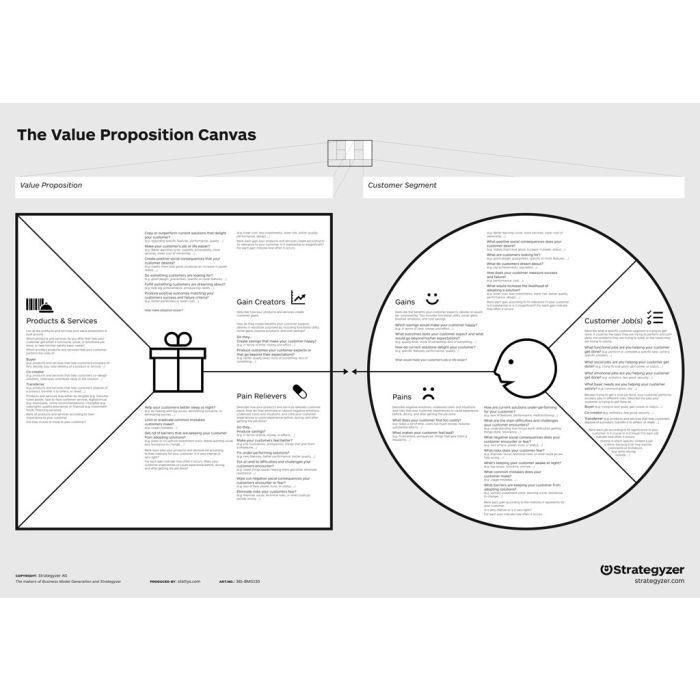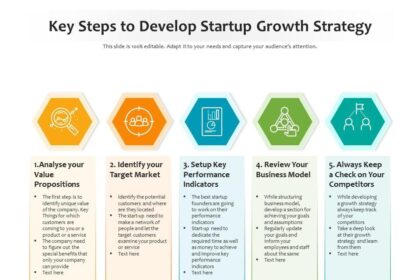In the ever-evolving landscape of entrepreneurship, the pursuit of the elusive product-market fit stands as a defining journey for innovators and business leaders alike. Like a skilled composer seeking harmony in a symphony, startups must meticulously tune their offerings to resonate with the needs, desires, and behaviors of their target audiences. The quest for perfect product-market fit is not merely a tactical maneuver but a profound exploration of understanding human connection, market dynamics, and the art of adaptation. In this article, we delve into the strategies, challenges, and insights that pave the way toward achieving that sought-after equilibrium, illuminating the path for those daring enough to navigate the complex interplay of consumer needs and market realities. Whether you’re launching a groundbreaking app or a revolutionary product, finding harmony in this dynamic realm is key to crafting a resonant and lasting impact. Join us as we uncover the symphonic nuances of aligning vision with value in the pursuit of business success.
Understanding the Essence of Product-Market Fit
At its core, product-market fit encapsulates the delicate balance between solving a significant problem and meeting the needs of a specific audience. This synergy is not achieved overnight; it’s a journey requiring deep insights into the dynamics of consumer behavior and market demands. The following attributes exemplify the essence of this critical alignment:
- Customer Understanding: Deep comprehension of the target demographic, their pain points, and preferences.
- Solution Validation: Ensuring that the product effectively addresses those pain points with tangible benefits.
- Market Size: Assessing whether the market is large enough to sustain business growth.
- Iterative Feedback: Regularly updating the product based on user feedback to enhance satisfaction and relevance.
A well-structured approach to achieving this alignment involves analyzing key performance indicators (KPIs) that highlight customer engagement and satisfaction. Below is a brief overview of some essential metrics to consider:
| Metric | Description | Importance |
|---|---|---|
| Net Promoter Score (NPS) | Measures customer loyalty and likelihood to recommend. | Indicates overall customer sentiment. |
| Churn Rate | Percentage of customers who stop using the product. | Highlights retention issues and areas for improvement. |
| User Engagement | Tracks active users and their interactions with the product. | Reflects the product’s value and user satisfaction levels. |

Exploring Customer Needs and Market Trends
To successfully navigate the intricate landscape of consumer preferences, businesses must engage in a diligent analysis of customer needs and market dynamics. By leveraging surveys, interviews, and social media insights, companies can unearth the true desires of their target audience. It’s essential to look beyond surface-level trends and focus on underlying motivations—the emotional and functional aspirations that drive purchasing decisions. Key areas to explore include:
- Product Features: What specific attributes resonate with customers?
- Pricing Sensitivity: How does price affect their purchasing choices?
- Brand Loyalty: What drives customers to stay loyal to certain brands?
- Emerging Trends: What new trends are influencing behavior?
Market trends serve as a compass for innovation and product development, highlighting opportunities for alignment between businesses and consumer expectations. Adapting to shifts in technology, lifestyle changes, and economic conditions can mean the difference between stagnation and growth. Companies should continually monitor key indicators to stay ahead of the curve, focusing on:
| Indicator | Importance |
|---|---|
| Consumer Feedback | Guides product improvements and innovations |
| Competitor Analysis | Identifies gaps and potential differentiation |
| Market Demographics | Informs targeted marketing strategies |
| Technological Advancements | Offers new avenues for product functionality |

Crafting a Value Proposition That Resonates
Creating a compelling value proposition is essential for businesses aiming to establish a strong connection with their target audience. An effective value proposition should clearly articulate how your product or service solves a problem or meets a need, allowing customers to easily see the benefits of choosing your brand over competitors. To achieve this, focus on the following elements:
- Clear Benefits: Highlight the primary advantages that set your offering apart.
- Target Audience Understanding: Dive deep into demographics and psychographics to tailor your message.
- Emotional Connection: Leverage storytelling to evoke feelings that resonate with consumers.
- Concise Messaging: Use precise language that cuts through the noise and clearly communicates your value.
Utilizing these components effectively brings clarity and focus to your brand’s offering. Furthermore, testing your value proposition with actual customers can unveil insights that refine your approach. Consider organizing feedback in a simple format to track strengths and areas for improvement:
| Aspect | Feedback | Improvement Suggestion |
|---|---|---|
| Clarity | Most customers found it easy to understand | Add FAQ section on the website |
| Emotional Resonance | Testimonials were impactful | Incorporate more customer stories in marketing |
| Competitive Differentiation | Some customers were unclear on why to choose us | Enhance comparison charts against competitors |

Iterative Testing and Feedback Loops for Continuous Improvement
In the pursuit of product-market fit, organizations often find themselves in a constant cycle of trial and refinement. By adopting iterative testing as a core practice, businesses can quickly gauge market response and adapt their strategies accordingly. It’s essential to incorporate a structured feedback loop that enables teams to gather insights directly from users. This approach not only uncovers potential areas for improvement but also fosters a sense of ownership and engagement among customers. Some effective strategies include:
- User Interviews: Engage directly with users to uncover their pain points and expectations.
- A/B Testing: Experiment with different versions of the product to assess what resonates better with the audience.
- Usability Testing: Observe users interacting with the product to identify any obstacles or confusing features.
These methods create a robust environment for evolution, allowing businesses to stay aligned with market needs. As iterations occur, compiling feedback into actionable insights becomes crucial. Setting up a systematic way to track this feedback can help prioritize changes and maintain focus on user satisfaction. A useful tool for visualizing this process is a feedback matrix that categorizes insights based on impact and effort:
| Feedback Type | Impact Level | Effort Required |
|---|---|---|
| User Suggestions | High | Medium |
| Usability Issues | Medium | High |
| A/B Test Results | High | Low |
By continuously analyzing these elements, teams can ensure that their product evolves dynamically in response to real-world interactions, progressively moving closer to the ideal product-market fit.
Concluding Remarks
In the intricate dance between product and market, the quest for perfect product-market fit is an ever-evolving journey that demands both intuition and tenacity. Just as a symphony requires careful tuning and practice, so too does the alignment of a product with the needs and desires of its audience. As you venture into this dynamic landscape, remember that harmony is not merely a destination but an ongoing process of adaptation and listening.
In wrapping up our exploration of this essential concept, consider each feedback loop, market trend, and consumer insight as notes in your unique composition. Embrace the learning curves and unexpected turns; these experiences will refine your strategy and deepen your understanding of your audience. Ultimately, achieving product-market fit is less about perfection and more about responsiveness to the ecosystem you’re part of.
So, equip yourself with patience and creativity, and continue to seek that harmonious balance. The journey may be winding, but every step you take brings you closer to a resonance that can elevate your brand and captivate the market. In this quest, let every insight be a stepping stone, every iteration a note in your ever-evolving symphony of success.


